Netflix - Rebel Moon : Part One: A Child of Fire : Let’s talk with Marcus Taormina Production Visual Effects Supervisor
By Mulder, Los Angeles, 02 to 21 december 2023

Marcus Taormina has worked in the Visual Effects industry for over a decade, on some of the highest-profile film franchises including The amazing spider-man (2012), Fast & furious 6 (2013), The amazing spider-man 2 (2014), Guardians of the galaxy (2014), and Teenage mutant ninja turtles: out of the shadows (2016). Furthermore, he was the VFX supervisor for Bird box (2018) and most recently for Zach Snyder’s Rebel moon (2023), which was released in select theaters on December 15th and set to stream on Netflix on December 21st.
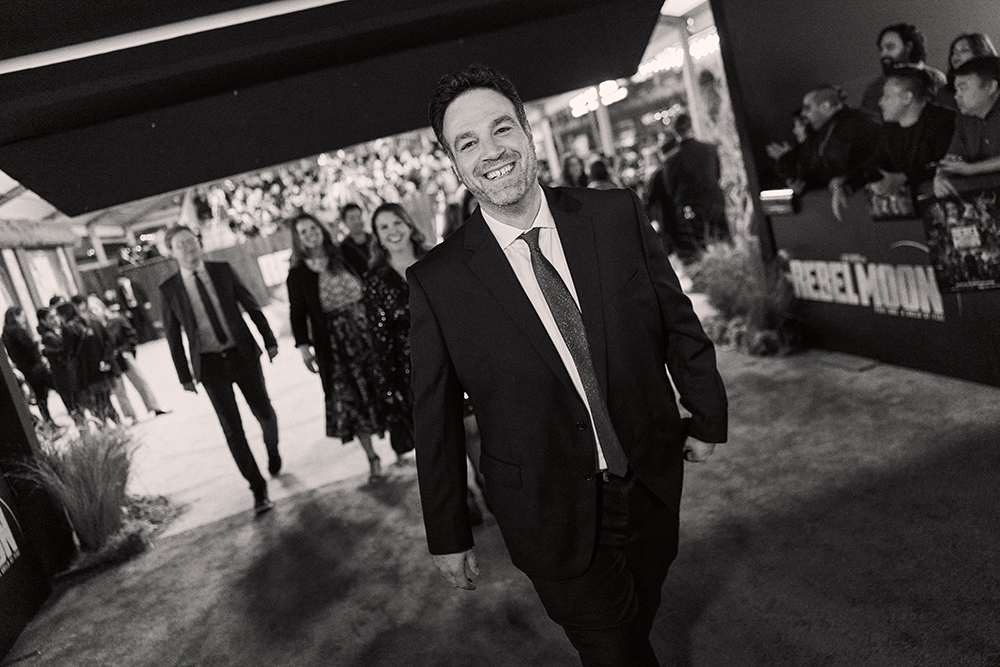
We had the opportunity today to participate in the Rebel Moon virtual press conference with Marcus Taormina, and you can now discover the virtual press conference and its transcription just below.
Q: Zack Snyder has a very distinctive visual style which carries across all of his work. How much room did that leave for you to innovate and develop your own ?
Marcus Taormina: That's a great question. I think the thing that's great about Zack is he has that visual style, he has that distinctive characteristic, but he also lets us kind of riff. So, he usually storyboards the majority of the film. We'll go out and will shoot, you know, basically shoot his boards. On occasion, just as shooting goes, there's an organic quality to it. So every once in a while, we'll go, 'Oh, it would be cool if we look this way and do a big, you know, huge scopey shot.' So I'm like, 'Yeah, let's do it.' But again, the thing that's really good about him is he lets you riff, and he kind of lets all departments riff a little bit and take it upon themselves to make it their own. So I think obviously there are certain things that are Zack Snyder—very Zack Snyder, like the slow-mo. But you know, I enjoyed taking the opportunity to say, 'Okay, this is your style, but we're gonna amplify it by adding certain details to it.' You know, I think we really enjoyed doing that, and I think it turned out really great. And I got to applaud Zack for just kind of letting us go, and not only me as a creative lead, as a visual effects supervisor, but you know, all the facilities and all the artists were right behind it too.
Q: Watching this film, there are so many great popping locals we get to visit. What was your favorite personally to work on in terms of location or planet ?
Marcus Taormina: Oh man, you know, I got to say Gondival at the end of the third act, only because it took so long. And actually, if you, if I'm sure the materials will come out soon, but that was shot on a tiny little green screen stage. It was actually segmented across multiple stages. So none of, obviously, all of that is a full digital build, all the atmospherics, are a fully digital effects pass. Compositors worked a very long time to make those shots look the way they do. And when it came, you know, when it was like, 'Yep, those are done,' I was just super excited and super happy with that environment. But all of them, to an extent, you know, and some of them are one-offs. We have somewhere around the count of about 38 environments depending on the complexities throughout the movie, but I think that one's probably my favorite.
Q: So I want to shift a little bit to the Oscar shortlist. Can you talk about, you know, when you found out what that was like, just your reaction to all of that? Because that's amazing and congratulations ?
Marcus Taormina: Thank you so much. I actually found out yesterday, pretty much like everyone else did. But it was exciting because, you know, we'd worked so long. I've been on the project for two and a half years now—projects, I say, because I'm working on the second movie as well for two and a half years. And I was telling, like, I was telling Emily and Mia too, for a while we were working in a vacuum, right? No one had seen the movie. They were very, you know, lock and key with the film. So I just, it's one of those moments where, you know, that you work so hard, and everyone's worked so hard on the project, and, you know, you feel that the work is good, but you're not quite sure how the audience will react to it, right? And so there was a little bit of nervousness to that before the movie released. But when everyone just reacted so positively to the trailer, I was like, 'Yeah, this is good.' And then when we got the announcement yesterday, I was just super proud. And I kind of keep reminding myself that the work speaks for itself, right? So I'm very proud of it. And we had a great leader in Zack and amazing artists across the globe did a fantastic job and really kind of got behind the ideas, you know, of what we wanted to accomplish, what those worlds were, the cinematography, which is very challenging just because, you know, it’s the one-of-a-kind lenses. And so, in order to make our shots look just like the practical photography, we had to do a lot of R&D and a lot of create a lot of tools to make that kind of pop and go hand in hand so it matched visually.
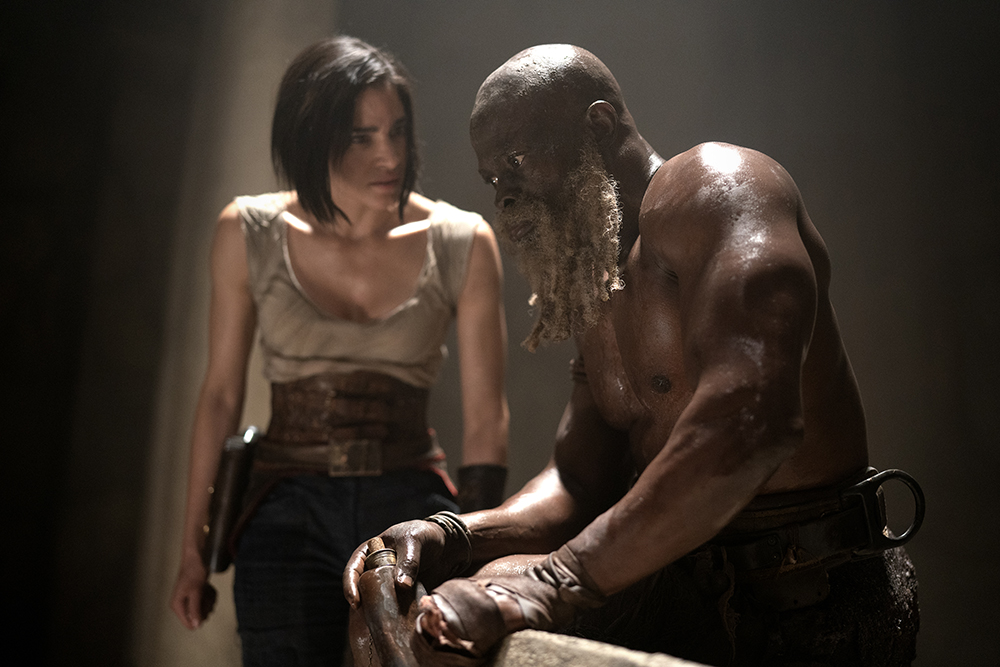
Q: Today, I just saw that you guys had the World premiere last week on the 13th at the TCL Chinese Theater. I just wanted to ask real quickly, as far as you attending that and just seeing everybody there as the fans, how was that reaction to everybody at that event? The energy was amazing there ?
Marcus Taormina: It was so much fun to see everyone react so positively about the movie. And I think one of my favorite parts of it was seeing the cast because I'm out there when we're filming, going, 'No, you got to do it this way. Like, don't worry. It's not gonna, you're not gonna have egg on your face like when you're touching the bennu. Like, trust me, it's going to look good.' And you really got to, like, and then explaining these characters that are really just, like, green screen heads or nothing, right? Over there, you're going to see it. And, you know, Zack and I obviously understand what that looks like in our minds, but no one else does. And to walk the cast through that is challenging sometimes, and they did a fantastic job. But when I got to see them, I'll specifically target Sophia because I, like, looked at her and I smiled, and she ran up and gave me a huge hug. She's like, 'Oh my God, my minds blown. How did you do this? Like, I don't understand.' And she wanted to know all the technical details, which is great about Sophia because when we're out there, she's asking questions. She wants to know. She wants to understand it to better herself. And, you know, everybody else too, like, Staz was like, 'You blew my mind.' I was like, 'I don't understand how you guys do what you do, but you did such an amazing job.' I mean, you know, for Staz, he's sitting on this green screen buck in a parking lot in Los Angeles that's swaying like this, and we're like, 'Don't worry. We'll make it look cool.' So just to have all the reactions from all of them to just be so, you know, ecstatic about what the final film was awesome.
Q: First off, congratulations. Love the movie, watching it yesterday. I love film, and one of the big things about film is visual storytelling. And we go to a lot of different worlds in this movie, and I just want to ask you how do you make worlds feel lived in? How does it feel to have, like, a history, culture, customs, and that look and feel? How do you create these worlds from scratch ?
Marcus Taormina: That's a great question, and I actually appreciate the question a lot because, you know, we work—I said it before, we kind of work in a vacuum, but also we, in order to get it to feel, in my opinion, in order to make everything feel real, it's about what's the story behind this. So for the worlds, we talk a lot about when we're designing them and when the production designers are designing them. We talk a lot about, okay, where is this? What is our inspiration? Where do these people come from? What are their values? And then in post-production, we take that, and we just amplify it even more. So we have a lot of conversation, and we talk about if in these worlds if there's creatures that we have to design too, what are those creatures? What are their motivations, right? So it's not a lot of people think, 'Oh, just digital, like you're just going to do it.' But we actually take a lot of care into figuring out, you know, the background of those environments, what makes it feel real. What real-world reference can we pull? You know, a lot of, like, atmospherics and, like, mood and lighting and composition, all those things factor in when we're designing those shots just because we want it to feel seamless. We want it to feel like, 'Oh, yeah, you're planet to planet,' but it won't go, 'Oh, that's all digital.' And part of that too is grounding, you know, grounding for this movie, grounding our cameras or even our digital cameras and practical constraints and making sure that they match the practical cinematography and movement that Zack as the DP and director did such a fantastic job.
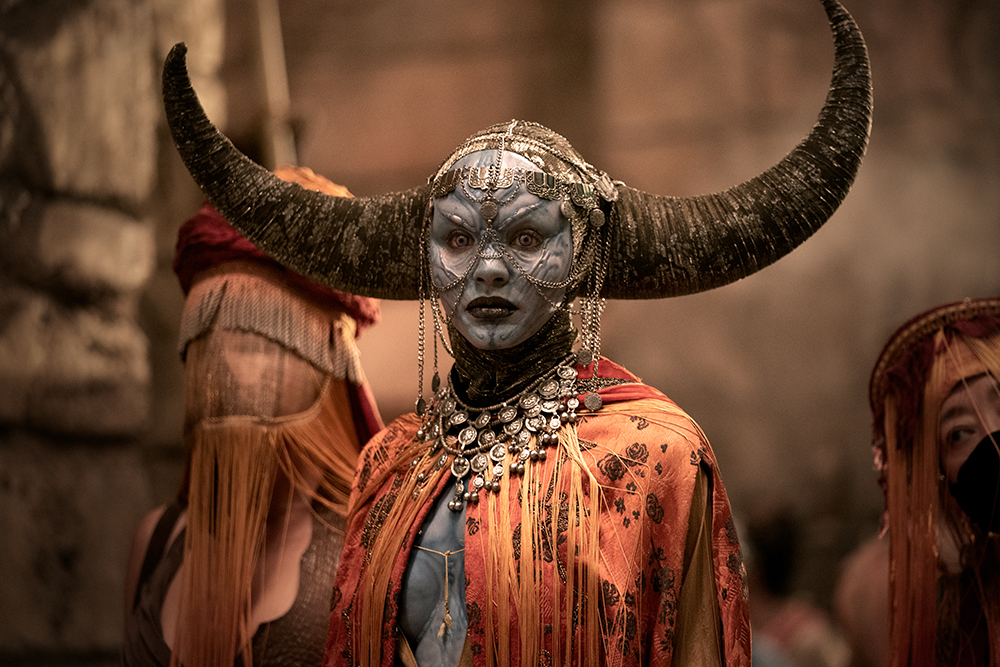
Q: I'm interested in the multiple cuts of the film. Of course, we know there's, like, a director's cut coming. So how was the work schedule with both cuts, like working on the shorter version and the longer? Was it a case where you start, where you work on both simultaneously, or you start with one and then move on to the next? Like, how was that ?
Marcus Taormina: So I'm not supposed to talk about it entirely, but I can give you a little insight to it. So we did start—I talk about the filming, actually, because we shot 152 days, 157 if you count, you know, my selfish days of shooting elements and stuff like that. And that was in itself a task. And along the way, we kind of tried to shoot as best we could in chronological order for both movies. And then towards the end of it, we tacked on some additional scenes. But a lot of, a lot of what the part one cut is derivative from the mass of the amount of shooting days we had. So that's kind of all I can say right now. But as far as a workload, we tried to do it in, again, chronological order. And we've gone from one. I'm currently finishing two, and then we'll be working on the extended cuts. All right, next. Sorry, I can't give you more.
Q: The question that I have for you is really about the challenges that you faced. I'm really curious about what was the biggest challenge and also how did you overcome it ?
Marcus Taormina: Oh, that's a good one. I'll try to focus on, like, one challenge, but it's hard. Filming was incredibly difficult. Filming that long was incredibly difficult. And when we were in veldt, the shoot conditions were very difficult. It was sometimes it was 110 degrees out on in veldt, and we were there all day in the sun. It was very gritty and dirty, which I absolutely love about our film. And I think it kind of sets it apart from, you know, more clean aesthetics of like films. But that also meant every day we're like picking dirt out of everything, washing our hair. So the filming was difficult. But then from a post-production standpoint, it was a sheer amount of volume we had to get through, and just the amount of shots, the amount of environments we had to create, and the amount of creatures. So in segmenting that in my mind was difficult because you had to—I had to align in post-production while we're shooting. That was the other thing. We were filming while we were turning shots over. So I'd actually—my days were very long. I'd get in the car at 6 a.m., be driven to set, and while I'm being driven to set, I'd be turning over shots on a computer. I'd have a little, like, remote, you know, Wi-Fi and be doing all that. I'd get to set, and I'd film anywhere from 12 to 14-hour days, get back in the car, and then do all the post through. So I'd work straight, but the segmentation of all the creatures and environments and making sure that we gave them enough time to explore a little bit early on so we could make them look absolutely fantastic when we needed to later on.
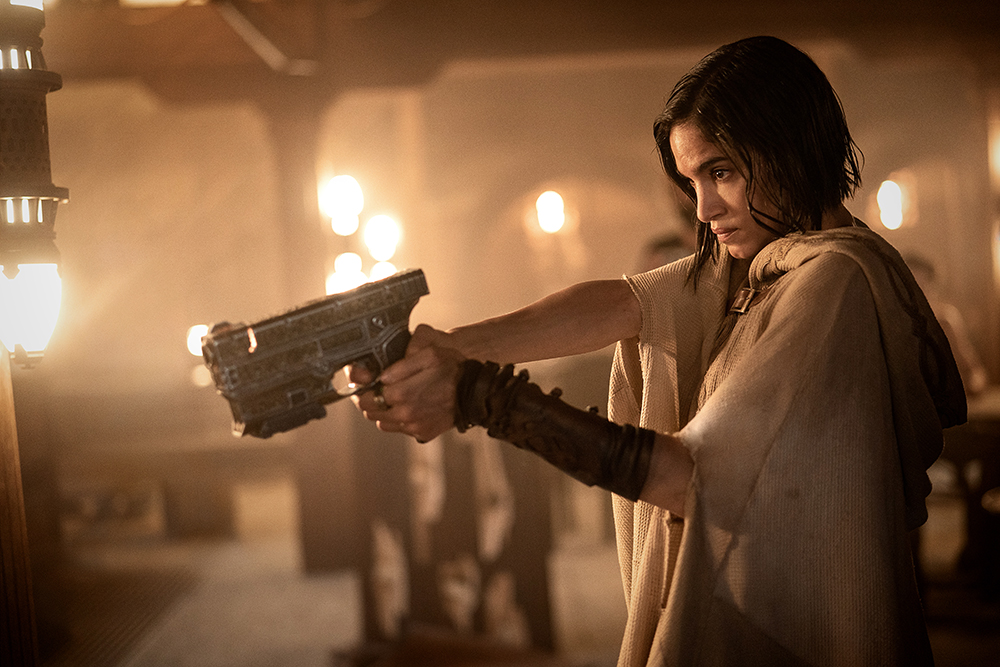
Q: I wanted to say in a world where video games look increasingly realistic and there's a big overlap in the way some effects are generated, how do you create something that still has that cinematic impact and makes people want to see something on a big screen ?
Marcus Taormina: Lots of time, lots of effort, lots of care, lots of details. I'm obsessive about details, you know. Zack will get in there sometimes, and I'll be like, 'The shot, I'm not ready with it yet,' and I'll show him the shot, and he'll be like, 'It looks really good.' I'm like, 'But I'm not done with it yet. I want to do this and this.' And he's like, 'Great, go do it again.' A great filmmaker will allow that to happen, and it's the tiny details to me that really matter. And, you know, we kind of have to push the technology every single time. I think a great example is, you know, when we started out in this film, it's like, 'Okay, what's our palette? What do we want it to look like?' I've said it in this interview; it's like, 'We want it to feel gritty, right, and dirty.' So what does that mean? Okay, well, we absolutely loved Dune's dust, but can we, you know, and it's not a disrespect to them, it's like, we love that, but we want to make it better. So how do we make it better? And so we had to push our resources to the limits and get this really dirty, gritty feel while also going, 'You have to match this,' because we did practical dust plates with a helicopter for some of the first drop ship landing. And then you kind of have to meld together and just create that, like, I want to say cinematic realistic look. And again, I think just grounding the cameras with the surrounding footage and also, like I talked about earlier, the optics that kind of get an extra click, which, you know, I know some people don't love the shallow depth of field, but it's a choice. It's a creative choice. So I don't want to go and have, you know, all Cast shot, and then in between there, do a crisp CG shot. It won't work. People are going to be like, 'That's digital.' So, you know, I want to make sure there's subtlety but a lot of detail to each of our shots.
Q: How did you ensure that the visual effects complemented the storytelling without overshadowing the performances of the cast ? (It was my question) ?
Marcus Taormina: That's a great one. That's a great one. I'll talk about Jimmy for a second because Jimmy's a great one where we kind of had to limit ourselves creatively, right? We could have done all this crazy stuff with Jimmy, but um, the history with Jimmy is interesting because we started out very early. We designed; we had a bunch of design phases through it with our production designers Stephen and Stefan. And we kind of landed at a point where we got to make this because it's shooting soon. And so we pushed that over to Fractured Effects, and they created that beautiful chest plate and faceplate. And then I talked to Zack, and I said, 'Well, you know, if Hopkins is going to voice this, we should get him in an ADR booth, do some scratch tracks, and to our performer so he can listen to it.' And for me, that was really important because I've been in situations where you have a voice of one person and you have a performer of another, and they never meld, and no matter what, your brain just knows and it goes, 'That's not right.' So we did that. Dody Dorn, our editor, created a quick like slap edit of that, and we gave it, and we video recorded it as well, of course, and we gave it to Dustin, who was the Jimmy performer, and he went and studied it. And he really studied it, like I thought he was just going to do it a couple of times and have it. I could tell that he really studied it because when he first got on set in the suit, and again, the suit was a beautiful head, a beautiful chest plate, and some shoulder plates, and he did the performance, but it was Anthony Hopkins. It was very even. For me, I was like, 'Something's weird here, like in a good way, where he I know that he studied it, and he kind of had the right movements to Anthony's. And so when we got into the post, I had a lot of discussions with Scanline, who did the work, and I said, 'I know how this is gonna hurt, but I don't want to digitally replace everything if there's a way we can preserve the chest plate and the faceplate in the majority of the shots. I want to do that because the lighting's so great on it. But also, we don't need to skew from the performances. We don't need to make Jimmy a robot and robot movement. Dustin's performance is there, and it's like beautiful.' And that's where we had to limit ourselves creatively because we could have done so many other things, right? But it's we wanted to, you're like, 'Dustin's great. Anthony Hopkins' voice is great. What do we do?' And that's where we, you know, Sam and Aris at the river where you have the subtle luminance of his eyes and they blush right. And so we brought in subtle human characteristics that all of us could relate to where you're like, 'Jimmy has soul now. He's a character that has soul.' And the same can be said with Levitca as well. You know, Tony is an amazing performer, and he did such a good job out there. And so we did a facial capture with Tony, but I said Tony's performance is there. We just have to complement it and retarget it to our creature. And like those are what we want, and that's the subtle movements in the lips or the eyes. And it's like that's what the audience is going to relate to again. Levitca is amazing too where he feels a little bit human there.
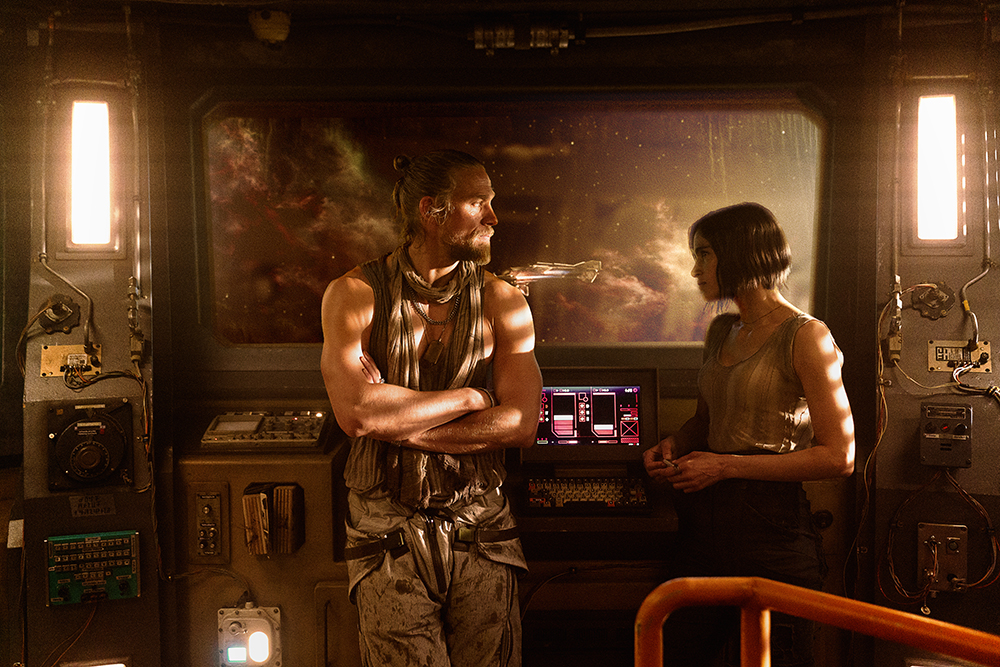
Q: One thing that really blew me away in this film was the use of the elements such as, of course, that dirt and water and how tangible it looks. One scene in particular that blew me away was where Jimmy is washing himself in the river. Now how did you accomplish that very convincing interaction between these fully CG characters and the elements so with that scene in particular ?
Marcus Taormina: It did; there was a moment like we, I think we're doing the right thing. And so I just let Dustin go, you know, we just let Dustin go at Zack direct Dustin. And when we got into post, I looked across it, and there's only a handful of shots that we actually had to do a water simulation back over just because some of the things would break, you know. He had blue gloves and he had a version of his robot hand, but it, you know, there's no negative space in it. So there's, you know, occlusions to the simulation or there's occlusions to the practical water that wouldn't be there. But the majority of those are really performances in the situation with a couple of blends between digital and practical water. And then obviously, the extensive paintwork that needed to be to happen for the inner workings of Jimmy. But again, I just kind of like the details right. So if you look at those shots, that means not only I had to paint, we had to paint out what's behind him, but it's actually the reflections on the water as well. And so you have to paint him out on the water and then make sure his reflection plays correctly over the water, which, you know, a little bit of digital magic there. But that's another scene where there's small details like, okay, the faceplate, keep the faceplate when we can. Or we had to, you know, in the blush moment, you had to replace the majority of the faceplate. But I said keep the chin because there's a droplet that goes off the chin that catches light because it's backlit in the right way. It has a specular highlight that like I know we could replicate, but like why would we? It's so beautiful the way it is.
Q: Just to piggyback off what Boris had even brought up, there was a question I had in there, what was the most challenging for you for the visual effects because I heard Jenna Malone's character was kind of a little bit difficult to get just right. Can you explain that process a little bit like what do you what did you feel was the most that was the most effort for you to get in the film ?
Marcus Taormina: I'd say it's hard, like it I want to say technically that was the most challenging because that was such a tricky obstacle, and that was the scene that every single department was like, and I said this already, but it's true is like every single department showed up, and they're like, 'I got you, I got you,' and all of us were working like firing on all cylinders exactly at the same time. And that was a hard one because you got stunt performance, you got Doona performance, you have Jenna's performance, you have the spider that's not there. So in my mind, I'm going okay, where's the legs and having to tell cast don't go over there, there's a leg over there, right? And then just making sure that I have all the capture of the environment for the paintwork. So technically that was very challenging. And I think for the Bennu named Beatrice, the benu took the longest to get to where you where the final product is just because it took so long. Again, these are small details, right? It's like the dirt and the feathers, the iridescence like and then the environment itself was a very tricky environment because it's bright sunlight against a, uh, basically a big bounce board, right? So the sand is so bright that it bounces back up. So some of the first, a lot of the ren lighting renders came across, and I was like, 'It's just not looking right.' And so we had to push it a little left and right if you will to get it to sit in. And then of course, the interaction between stars, you know, was difficult too. And I have to say that the animation team did just an absolute bang-up job and took my obnoxious notes and stride because it's like there's so many good I want to say like ticks in there if you will for Beatrice with the ear flicks and the eye darts and the peacocking, you know, and all those things added the believability. So that one probably was the most took the longest I'd say, which is a challenge in itself.
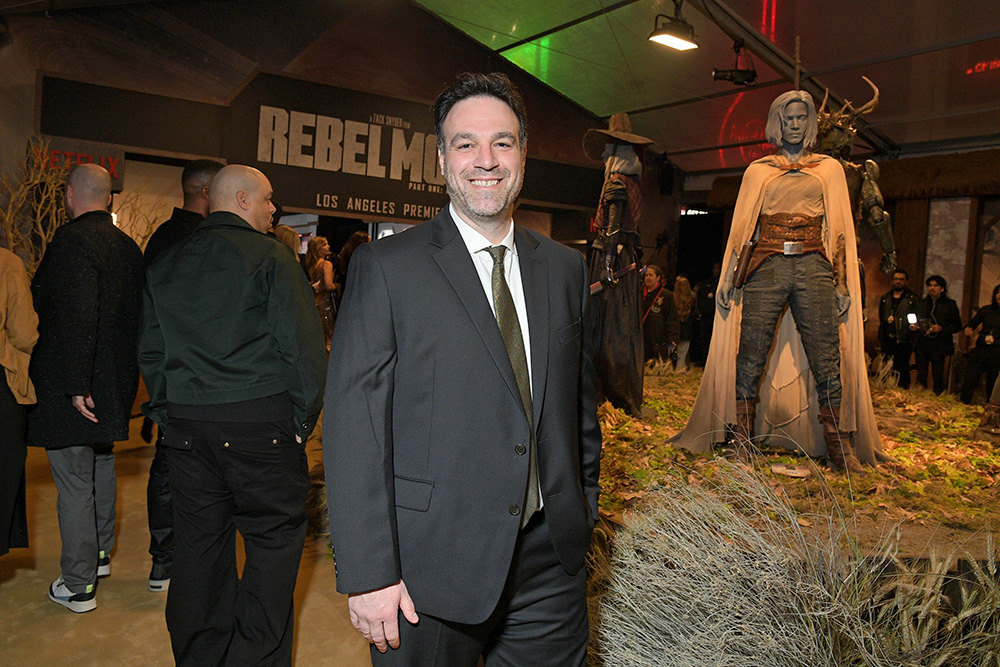
Rebel Moon: Part One – A Child of Fire, directed by the visionary Zack Snyder, delivers a sweeping space opera experience that unites an exceptional ensemble cast, including luminaries like Sofia Boutella, Charlie Hunnam, and Anthony Hopkins. Following a limited theatrical release on December 15, 2023, the film made its streaming debut on Netflix on December 21, 2023. Despite a mixed critical reception, with commendations for its impressive worldbuilding and action sequences, the film faced criticism for its narrative and character development aspects.
The narrative unfolds in a universe governed by the corrupt Motherworld government, where the moon of Veldt confronts an imminent threat from the Imperium forces led by the ruthless Regent Balisarius. Protagonist Kora, portrayed by Sofia Boutella, a former member of the Imperium seeking redemption, takes center stage as she embarks on a daring mission to rally warriors from diverse corners of the galaxy. The film draws inspiration from cinematic legends such as Akira Kurosawa, Star Wars, and Heavy Metal magazines, undergoing a transformative journey from its original concept as a mature take on the Star Wars universe to becoming a feature film produced by Netflix.

Beyond its cinematic debut, Rebel Moon paves the way for an expansive intellectual property, showcasing Zack Snyder's broader vision for the universe. Plans include a sequel, Rebel Moon – Part Two: The Scargiver, scheduled for release on April 19, 2024, with Snyder expressing his ambition for a trilogy. The franchise extends into various media formats, featuring a role-playing video game, an animated short, a graphic novel, and a TV series centered around the character Balisarius. Additionally, a novelization penned by V. Castro is set for publication on December 26, 2023, ensuring that Rebel Moon's rich and immersive universe continues to captivate audiences across different storytelling platforms.
Synopsis :
After crash landing on a moon in the furthest reaches of the universe, Kora (Sofia Boutella), a stranger with a mysterious past, begins a new life among a peaceful settlement of farmers. But she soon becomes their only hope for survival when the tyrannical Regent Balisarius (Fra Fee) and his cruel emissary, Admiral Noble (Ed Skrein), discover the farmers have unwittingly sold their crops to the Bloodaxes (Cleopatra Coleman and Ray Fisher) — leaders of a fierce group of insurgents hunted by the Motherworld. Tasked with finding fighters who would risk their lives to defend the people of Veldt, Kora and Gunnar (Michiel Huisman), a tenderhearted farmer naive in the realities of war, journey to different worlds in search of the Bloodaxes, and assemble a small band of warriors who share a common need for redemption along the way: Kai (Charlie Hunnam), a pilot and gun for hire; General Titus (Djimon Hounsou), a legendary commander; Nemesis (Doona Bae), a master swordswoman; Tarak (Staz Nair), a captive with a regal past; and Milius (E. Duffy), a resistance fighter. Back on Veldt, Jimmy (voiced by Anthony Hopkins), an ancient mechanized protector hiding in the wings, awakens with a new purpose. But the newly formed revolutionaries must learn to trust each other and fight as one before the armies of the Motherworld come to destroy them all.
Rebel Moon - Part One: A Child of Fire
Directed by Zack Snyder
Screenplay by Zack Snyder, Kurt Johnstad, Shay Hatten
Story by Zack Snyder
Produced by Deborah Snyder, Wesley Coller, Zack Snyder, Eric Newman
Starring Sofia Boutella, Charlie Hunnam, Michiel Huisman, Djimon Hounsou, Doona Bae, Ray Fisher, Cleopatra Coleman, Jena Malone, Ed Skrein, Fra Fee, Anthony Hopkins
Cinematography : Zack Snyder
Edited by Dody Dorn
Music by Tom Holkenborg
Production companies : The Stone Quarry, Grand Electric
Distributed by Netflix
Release dates : December 15, 2023 (United States), December 21, 2023 (Netflix)
Running time : 134 minutes

Photos : Copyright Netflix

